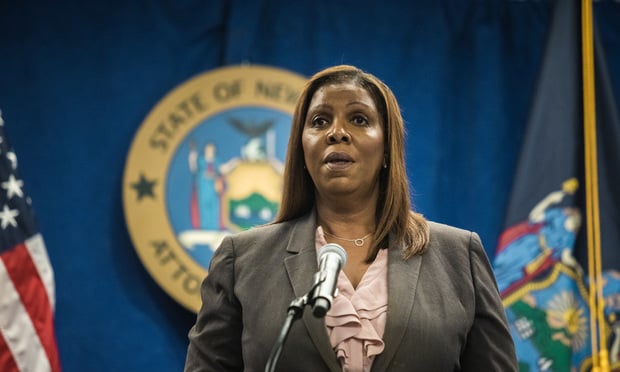
As new economic, geopolitical, and capital markets take hold over the next few years, plan sponsors will need to make strategic investment decisions that can help their participants maintain balance in the face of these changes, according to a new Fidelity report.
Watch for “myriad changes in the economic, geopolitical, and capital markets taking hold over the next few years,” according to Fidelity Investments new report, Trends impacting retirement investment decision-makers.
Recommended For You
This new report provides retirement plan investment decision-makers details about some considerations they may need to take into account to achieve and maintain balance in the face of changes taking place in the economic, geopolitical, and capital market environments, as well as the demographic composition of the workforce.
“Retirement plan decision-makers have a lot to balance,” said Tamara Barber, Vice President, Thought Leadership at Fidelity Investments. “Not only has the retirement industry undergone dramatic changes in the past few decades, but capital market dynamics and the evolution of workplace demographics also have implications for plan participants’ investment and retirement needs.”
Fidelity’s report is focused on four key areas:
#1: Greater portfolio diversification. “A capital market defined by rising volatility and lower returns—combined with an evolving workforce—will likely alter defined contribution (DC) plan participants’ investment and retirement needs,” according to Fidelity. Plan sponsors need to consider the shifting demographics of their participants.
In the past two decades, the number of employees ages 55 and above has increased 74% and 63% of employers have a workforce where 30% of employees are 50 or above, according to the report. Now is the time for plan sponsors to reassess if retirement plan lineups and investment strategies are set up for success in this new workplace regime. Some things to consider include whether the plan lineup includes broad market coverage, high diversification potential and sufficient choice for participants.
#2: Defined contribution plan trends to watch. DC plan lineups need to be continuously adjusted as new long-term trends in the capital markets, the workforce and product landscapes evolve, according to Fidelity. On average, 401(k) plans offer 21 investment options in their lineups, down from 24 options one decade earlier.
Plan sponsors also need to stay on top of the evolution of DC plan lineups that now include collective investment trusts, which have been gaining attention given their lower costs and flexibility, and retirement income as investment options. Employers are in the early stages of offering guaranteed income but it will continue to be top of mind for many employers as they assess their plans.
“While decision-making processes and philosophies will differ depending on the plan … some notable highlights from our research include an incremental decline in the number of options offered in plan lineups, an increase in plans offering certain asset classes, momentum toward professionally managed offerings, and more focus on retirement income options,” said Barber. “Every plan will be different, but plan sponsors, their advisors, and consultants can use these trends to help assess whether their plans are keeping pace with peers and providing a range of options for different participant needs.”
#3: Using target date funds (TDFs) to navigate uncertainty. With 94% of all DC plans offering TDFs, plan sponsors are aware that they are a one-size-fits-most investment strategy that has played a central role in helping investors navigate shifting market environments, according to Fidelity. However, plan sponsors need to understand how TDFs navigate capital market uncertainty, provide retirement income options and engage participants. In addition, TDFs that offer retirement income – through annuity purchase options – are a new area of development in which plan sponsors are beginning to take interest.
Related: New 401(k) contribution limits for 2025: Are your older employees aware of ‘super’ catch-up limits?
#4: Legislative and regulatory outlook. In 2025 and beyond, “litigation risk and changing priorities in Washington will likely be at the top of retirement plan investment decision-makers’ minds,” according to the report. Plan sponsors need to have sufficient line of sight into legislative and regulatory issues in the coming years.
There are three key policy issues that will be on retirement plan investment decision-makers’ radar and that stand to impact plan sponsors’ strategic decisions in the coming years, according to Fidelity: 1) SECURE 2.0, which includes the mandatory auto-enrollment provision in 2025 and the catch-up contributions on a Roth basis in 2026; 2) recent court decisions, including the Supreme Court Loper decision, which could potentially affect the DOL’s ability to issue broad regulations impacting retirement plans; and 3) the 2017 Tax Cuts and Jobs Act, which introduced sweeping shifts to the tax code that impacted employers that offer retirement plans.
“Litigation risk and changing priorities in Washington will likely be at the top of retirement plan investment decision-makers’ minds,” said Barber. “Continued implementation of Secure 2.0 provisions, monitoring recent court decisions, and the fate of the 2017 Tax Cuts and Jobs Act (which is set to expire this year) are three areas that many plan sponsors will be tracking closely.”
© 2025 ALM Global, LLC, All Rights Reserved. Request academic re-use from www.copyright.com. All other uses, submit a request to [email protected]. For more information visit Asset & Logo Licensing.








